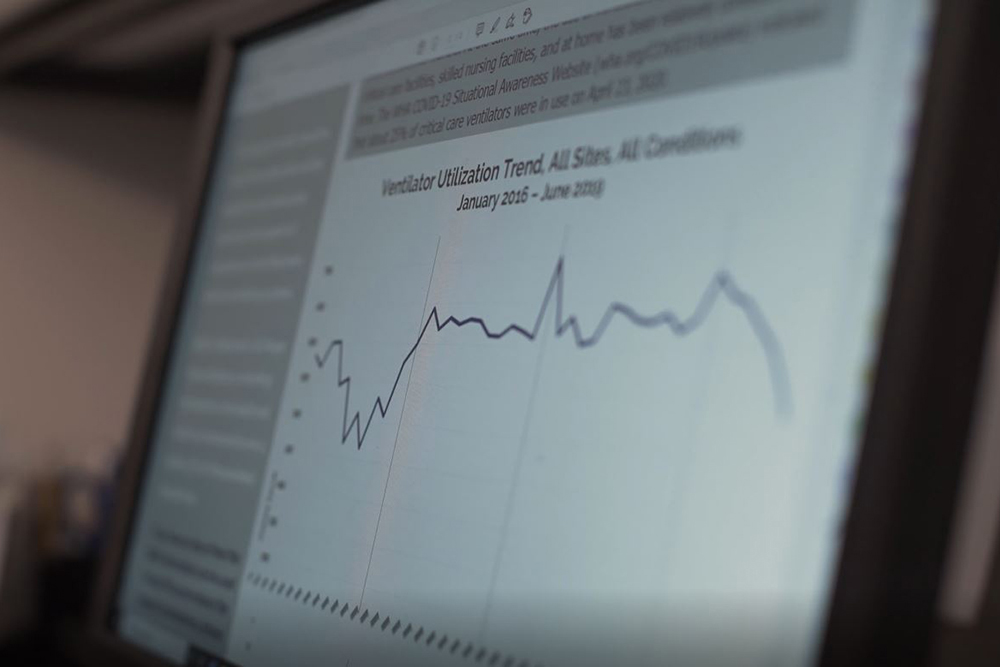The Wisconsin Health Information Organization, or WHIO, as it’s known, is a non-profit data and information resource established in 2008 that helps employers, providers health insurers, and the Wisconsin state government improve the quality and control the cost of health care. The WHIO information system includes health care claims data on 4.9 million citizens – roughly 72% of Wisconsin’s population.
On behalf of WHIO, its chief executive officer, Dana Richardson, was presented with a Health Transformation Award by The Alliance for its significant contributions to improving health care delivery and increasing Wisconsinites’ access to high-value health care.
Where Does WHIO’s Data Come From?
Health plans have been using claims information for many years to evaluate the performance of their network providers and the experiences of their members.
WHIO, an All-Payer Claims Database (APCD), is essentially a super-sized claims data system. They obtain and aggregate claims data from multiple health plans and other payors on commercial, Medicare Advantage, Wisconsin Medicaid, and self-funded employer plans (including The Alliance). The WHIO cleans, integrates, and enhances the claims data to enable sophisticated measurement and tracking of quality and resource use over time.
Using WHIO’s vast data resource, we’re all able to access the same objective source of information, which produces transparency and paves the way for collaboration.
The All-Payer Claims Database: A Single Source of Information
Organizations participate in the WHIO to benchmark results, and so that trends and patterns in health care can be identified that would otherwise go undetected.
“Wisconsin was an early adopter of the all-payers claims database concept,” said Dana, “Many states limit the use and access of information but in Wisconsin, we encourage it’s used by all stakeholders: health plans, employers, providers, researchers, state agencies, and more. We’ve taken an approach where all are encouraged to use the information because it improves the health care delivery system overall.”
Another advantage of having a single source of claims information is that multiple organizations can access that information, reducing the administrative costs of obtaining and providing the data to multiple, separate organizations.
Added Success Through Self-Funded Claims
Nearly all health plans in the State of Wisconsin contribute data to WHIO, in addition to Medicaid. They are currently working to bring in the Medicare fee-for-service data from the Center for Medicaid & Medicare Services.
“One of the unique aspects of WHIO is that it’s a voluntary claims contribution system,” Dana explained, “But the really unique thing is we also have self-funded claims, which is unusual among APCDs in other states.”
Not every state has a data resource like WHIO, and those that do typically benefit from a legislative mandate requiring insurers to contribute data. WHIO doesn’t, which makes its success that much more remarkable.

Comprehensive Datasets Create Benchmarking Standards
Payers use the WHIO information to compare provider systems on their quality and cost-efficiency, while providers use the information to benchmark themselves against other organizations that provide care – or to statewide or regional benchmarks.
Benchmarking is important because it provides organizations with the ability to put context around their results, providing them with an opportunity to create improvement strategies,
Dana explained, “So let’s say, for example, you received a score of 80. You wouldn’t know if you’re actually performing well or not by looking at that number alone. By using benchmarks, you can prioritize where you are going to put your improvement resources.”
Providing Important Information for Payers and Purchasers Alike
Health plans and purchasers (like The Alliance) use the WHIO data to identify high-value providers when making network decisions. Employers also use the information to create high-value networks of providers and to design benefit plans that encourage employees to use high-quality, lower-cost provider organizations, or clinicians.
In addition, doctors and hospitals can use WHIO information to identify opportunities to improve care and lower their costs, too.
Smart Data Drives Convenience, Cost Savings, and Quality Control
WHIO data has been used for a variety of purposes; some organizations use the data for strategic planning and operational monitoring. In other situations, organizations use the information to quantify the resources used in creating and delivering care which helps them reduce the variation – and hopefully the cost – of care that is provided.
“Employer organizations have used the information to identify high-value physicians, both for primary care and select specialties.”
Using Data to Combat COVID-19
Under Dana’s leadership, and through an extraordinary public health crisis, WHIO – using their resource of vast information – has developed an analysis to help identify citizens who are at high-risk for severe complications of the coronavirus (COVID-19).
We’ve used the information to identify individuals who are high-risk for serious diseases if they were to contract the coronavirus infection,
she said. “We provided that information to the Department of Health, Medicaid division, and other health plans, so they can individually contact high-risk people and work with them to provide the resources necessary to make proper health care choices.”
Calculating the Cost of COVID-19
WHIO has also provided a coronavirus cost calculator to several health plans to help them determine the financial impact of the virus and deferred non-urgent procedures on their – and their members’ – bottom lines.
The WHIO is currently working on metrics that will help figure out the impact of COVID-19 on the health of Wisconsinites. For example, identifying what additional services a patient may need after they leave the hospital, or what services someone might need after a “mild” case of the virus. The WHIO is also evaluating the impact of social isolation by looking at behavioral health care trends.
Assessing the Impact of Deferred Care
Beyond that, Dana says WHIO is looking at the financial impact of COVID-19 on health care as a whole – something they believe is crucial to Wisconsin’s economy – by trying to solve things like calculating the financial impact of deferred care.
For instance, by determining what care has been deferred – non-urgent procedures, chronic disease care, and preventive care – we can begin to estimate the financial impact of these deferrals today and into the future. Another question they’re trying to answer is how many patients are returning to the health care delivery system to receive this care, and what are the common characteristics of patients that are getting this care compared to those who are not.
These are important questions to answer because we can all agree that chronic disease and preventive care is critical to improving health outcomes in the future.
Using Claims Data to Do Good
The WHIO makes their data available through de-identified data files under the Intelligence Bank product line to organizations. WHIO currently has two different data files that are used for different purposes. The Standard Integrated Data (SID) file includes data that is organized to create a longitudinal data system over time.
“We bring the data together and organize it in a way that we create a longitudinal record of each individual in the claims database,” explained Dana. “By doing that, users of the SID file can create a history of an individual’s care over time, regardless of who paid for the care, or who provided the care.” This allow for longitudinal assessments of care patterns and outcomes of these care patterns over time.
The second data file, the Enhanced Data (ED) file, is organized to support quicker evaluations of costs and the resources used to provide care. “We enhance the ED file with Episode Treatment Groups – which you may think of as bundles of care – risk adjustment, and normalized price, which eliminates the need for understanding contractual relationships between providers and payers.
For providers and health plans that do not have analyst or IT structure to use the WHIO’s de-identified data files, the WHIO offers a series of reports under their Applied Insights product line. The Applied Insights reports are prebuilt and accessible through a secure web portal.
And finally, we make sure that the data files and reports are compliant with all HIPAA requirements, such that we can provide the information to a variety of different organizations in the state.”
Processing Claims Data for ~5 Million Individuals
When asked about how many individuals are in the database, Dana replied, “That number is more difficult to count than you might think because some individuals receive care multiple times in a year, and others do not receive care every year.
What we do know is that we receive claims on roughly 3 million unique insured lives every year, and since 2017, we have gathered information on approximately 4.9 million Wisconsinites.”
Just like other forms of technology, health care informatics is not cheap – especially when you’re working with the large amount of data that the WHIO does.
“The amount of processing power and the sophistication of our technology processes has improved, but it costs a fair amount of money to create a mega-data system the size of WHIO – both for data aggregation and storage as well as the analytics.”
How Employers Benefit from WHIO Data?
The most common question Dana hears from people at organizations looking to use their services?
“I’m most often asked: ‘How do I use this information in order to improve the performance of my organization?’ And I think the simplest thing to do is to ask yourself what are the most pressing challenges your organization is facing today? What are the critical questions you need answers to? And then use those critical questions to steer the types of analyses you want to use with the WHIO data.’”

Wisconsin Collaborative for Healthcare Quality Partnership
WHIO is planning to add additional types of data to their information system to augment their claims information.
“Beyond using claims information on its own, the WHIO is thinking towards a future where we can use our new technical platform to integrate other types of data in tandem with claims information,” Dana said.
For example, WHIO has forged a collaborative partnership (called 360 ValuCounts) with the Wisconsin Collaborative for Healthcare Quality to integrate their clinical data with WHIO claims data. That information will be used to create more comprehensive reports – starting with patients diagnosed with diabetes or behavioral health issues – to create a more complete picture of the care provided for those patients.
“With this, we’ll be able to include process quality measures, outcomes, as well as the cost of care that was used to provide those outcomes,” Dana said.
An Exciting Future for WHIO and Wisconsin
WHIO is looking to expand the use of its information system by adding information on social risk (or social determinants) of health.
“In general, we can use publicly available surveys that allows us to see the environment that an individual is living in. So, for example, approximate income level, or education level, or the density of housing that they’re living in, can help us identify social disparities in health care.”
After being asked what she hopes the future brings for her organization, Dana responded with an aspiration for collaboration between all employers and providers.
My hope for WHIO and the State of Wisconsin is that our work is woven into the very fabric of health care in the state; where all organizations can take advantage of this information and contribute to improving the health of Wisconsinites and the healthcare delivery system through information-driven decision-making.”
